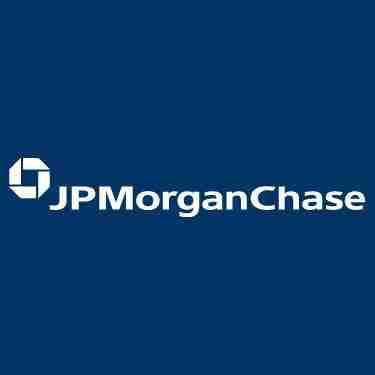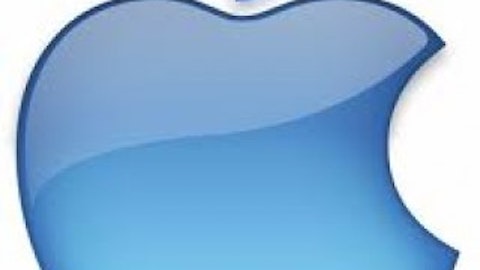A leading diversified financial institution, JPMorgan Chase & Co. (NYSE:JPM) has slightly outperformed the Dow Jones industrial average year-to-date, rising 15.8% compared to the 11.9% return offered by the blue-chip average.
JPMorgan Chase & Co. (NYSE:JPM) is a leading diversified financial institution with major segments including: trading, retail banking, credit-card services, mortgage banking, commercial banking, treasury and securities services, advisory and underwriting services, asset management, and private equity. Based on market capitalization, the company is valued at $192.5 billion. Fundamentally, JPMorgan Chase & Co. (NYSE:JPM)’s business model is strong and profitable, with the company possessing a trailing-12 month profit margin of 23.8%.
With the company trading within $15 of all-time highs, should investors pour into this historic company or should they look elsewhere in the financial world?

Strengths:
- Historic steady revenue growth: In 2000, JPMorgan Chase & Co. (NYSE:JPM) reported revenue of roughly $50 billion; in 2012, the company announced revenue of $97.0 billion, representing year-over-year annual growth of 5.7%, a trend that is anticipated to continue into the future with projections placing 2019 revenue at $132 billion. This growth has been a result of a major mergers and strong performance across all business segments.

- Dividend: Currently, JPMorgan Chase & Co. (NYSE:JPM) pays out quarterly dividends of $0.30, which annualized puts the dividend as yielding 2.4%, exposing investors to the long-term benefits of dividends
- Institutional vote of confidence: Nearly 70% of shares outstanding are held by institutional investors, displaying the confidence some of largest investors in the world have in the company and its future
- Reasonable valuation: Presently, JPMorgan Chase & Co. (NYSE:JPM) carries a price-to-earnings ratio of 9.1, a price-to-book ratio of 1.0, and a price-to-sales ratio of 2.1; all of which indicate a company trading with a reasonable valuation providing investors with an attractive entry point
- Diversification of business: JPMorgan possesses a large and diversified business, stretching across all major markets of the world and several distinct industries, and with this diversified characteristic comes a greater level of predictability and security for investors
- Margin expansion: The company’s profit margin has expanded from roughly 15% in 2004 to the 26.0% level today; this trend of margin expansion means that JPMorgan keeps more of each dollar of revenue, translating into higher earnings for the company

- Small debt load: While the company’s long-term debt of $263.3 billion is rather substantial, it is rather minuscule compared to the company’s money market assets, totaling $679.3 billion as of the end of 2011; this small debt load allows the company to not be restrained as it can utilize its cash to finance expansion plans, not paying down debt
Weaknesses
- Relatively high volatility: At the moment, JPMorgan holds a beta ratio of 1.4, representing a company trading with considerably more volatility than the overall market, a minor downside for long-term investors as investors can become spooked
Opportunities
- Dividend growth: Since implementing its dividend program in 1827, JPMorgan has consistently raised its dividend payouts in times of economic growth, and is highly expected to continue to do so in the future; representing the financial strength of the company

- Credit-card segment: Credit card services make up 17.2% of the overall business, and the most important dynamics in this segment are credit-card loans outstanding and total charge volume, both of which have risen moderately over the past five years. Further growth could present opportunity to increase revenue.

- Retail banking segment: Approximately 17.4% of the overall business is concentrated in the retail-banking segment, and the most important dynamic in this segment is average deposits, or the total value of checking, savings, and other deposits held by the company. This has risen sharply over the past five years, and is widely projected to continue to do so into the future, which will substantially increase overall company revenue.

- Growth in consumer confidence: When consumer confidence prospers, spending increases, the use of credit-card services increases, and home purchasing accelerates, all of which benefit the company; any growth in consumer confidence could present the opportunity for the company to meet rising demand and thus increase revenue

- Mortgage segment: The historically low mortgage rates and attractive housing market have fueled substantial growth in JPMorgan’s mortgage banking segment, which constitutes 13.7% of overall business, and a continuation of attractive conditions for buyers could present the opportunity for the company to take advantage of an expanding market and increase revenue in the segment

Threats
- Looming financial settlements: The dust from the financial collapse is still settling, and there are still major looming financial settlements hanging over the company which could cost billions of dollars in lost profit
- Government regulation: Any government regulation which restricts JPMorgan’s ability to expand efficiently could pose a major threat to the company and cost the company billions of dollars in potential revenue.
Competitors:
Major publicly traded competitors of JPMorgan include Citigroup Inc (NYSE:C), Wells Fargo & Co (NYSE:WFC), Goldman Sachs Group Inc (NYSE:GS), and U.S. Bancorp (NYSE:USB). All of these companies operate in the financial industry and compete directly with JPMorgan.
Citigroup Inc (NYSE:C) is valued at $138.3 billion, pays out a dividend yielding 0.1%, and carries a price-to-earnings ratio of 16.3. The company possesses a price-to-book ratio of 0.8. Fundamentally, Citigroup Inc (NYSE:C)’s business model is profitable with a trailing-12 month profit margin of 11.8%. Looking forward, Citigroup Inc (NYSE:C) is anticipated to maintain low-single digit growth, in respect to revenue, until 2017.
Wells Fargo & Co (NYSE:WFC) is valued at $211.2 billion, pays out a dividend yielding 3.0%, and carries a price-to-earnings ratio of 11.3. The company possesses a price-to-book ratio of 1.5. Fundamentally, Wells Fargo & Co (NYSE:WFC)’s business model is strong with a trailing-12 month profit margin of 23.1%. Into the future, the company is projected to experience consistent and steady low single-digit growth in respect to revenue.
Goldman Sachs Group Inc (NYSE:GS) is valued at $69.2 billion, pays out a dividend yielding 1.3%, and carries a price-to-earnings ratio of 10.4. The company possesses a price-to-book ratio of 1.1. Fundamentally, Goldman Sachs Group Inc (NYSE:GS)’s business model is relatively strong with a trailing-12 month profit margin of 22.2%. In terms of revenue, the company is projected to experience flat-line growth with revenue fluctuating around the $35 billion mark.
U.S. Bancorp (NYSE:USB) is valued at $65.5 billion, pays out a dividend yielding 2.6%, and carries a price-to-earnings ratio of 12.2. The company possesses a price-to-book ratio of 1.9. Fundamentally, U.S. Bancorp (NYSE:USB) is the strongest of the group, with a trailing-12 month profit margin of 28.7%. Forward looking, the company is expected to experience steady mid single-digit growth in terms of revenue.
The Foolish bottom line
Financially, JPMorgan is extremely strong. The company possesses stable revenue growth, strong assets growth, and a reasonable valuation. Despite the company’s high volatility, its future is filled with cyclical growth. All in all, JPMorgan is an incredibly run company and should hand investors returns slightly outperforming the overall financial industry.
The article A Dominant Force in the Financial World originally appeared on Fool.com.
Ryan Guenette has no position in any stocks mentioned. The Motley Fool recommends Goldman Sachs and Wells Fargo. The Motley Fool owns shares of Citigroup Inc (NYSE:C) , JPMorgan Chase & Co (NYSE:JPM)., and Wells Fargo. Ryan is a member of The Motley Fool Blog Network — entries represent the personal opinion of the blogger and are not formally edited.
Copyright © 1995 – 2013 The Motley Fool, LLC. All rights reserved. The Motley Fool has a disclosure policy.



